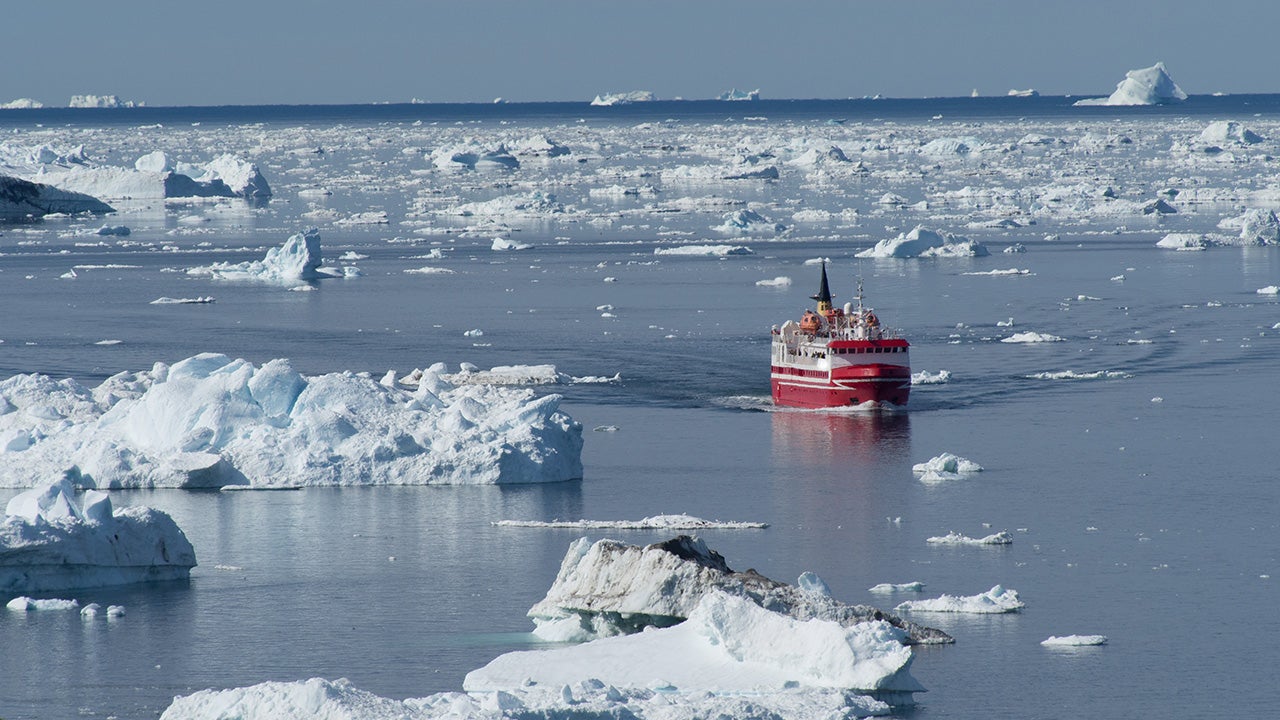Evolution of China’s Belt and Road Initiative: Polar Silk Road

The Belt and Road Initiative (BRI) remains one of China’s most important national strategies. In the past most achievements related to promoting the primary targets of the initiative, the land-based Silk Road Economic Belt and sea-based 21st Century Maritime Silk Road. In recent years, China has expanded its ambitions with the introduction of the Digital Silk Road, Green Silk Road, Health Silk Road, and Polar Silk Road. While developments in these four areas have already changed the BRI landscape, global investors’ knowledge of the progress being made is still nascent. In this four-part blog series, we delve into these dimensions of the BRI to allow global investors to better understand the initiative’s future roadmap and the relevant investment implications. This fourth and final blog of the series covers the Polar Silk Road.
What is the Polar Silk Road?
The Polar Silk Road project was initiated in 2018 by Chinese policymakers and refers to Arctic shipping routes connecting three major economic centers – North America, East Asia, and Western Europe – through the Arctic Circle. Historically, navigation in the Arctic Circle was challenging given the amount of sea ice. However, the trend of melting sea ice in the Arctic in recent years is making a difference and the area is becoming increasingly accessible. This could create a significantly shortened shipping lanes and offer a cheaper alternative to the current shipping route, which reaches major markets in Europe via the Indian Ocean and Suez Canal. Aside from developing an arctic shipping route, the Polar Silk Road also aims to further offshore arctic fossil fuel production and mineral mining.
Why the Polar Silk Road?
The access to a shortened shipping route and the potential for resource exploration in the Artic Circle provide a strong incentive for Chinese officials to play a leading role in developing the arctic zone and championing the Polar Silk Road.
Compared to the current Maritime Silk Road route via the Suez Canal, the distance between China and the major ports of Northern Europe is about 40% shorter via the Arctic Ocean route.1 The Suez Canal route takes around 48 days while the sea journey via the Arctic Ocean could take less than half that time (Figure 1).2

Source: Invesco, for illustrative purposes only.
As one of the first movers in the space, China released its first white paper on arctic policy in 2018 with a focus on the ample mineral resources and new shipping routes in arctic region. In the paper, Chinese policymakers shared their interest to join in the exploration of oil, gas, minerals, and other non-living resources in the area. Beijing also added that it would be necessary to understand the arctic area, develop the fishing and tourism sectors together with other biological resources, protect the environment, jointly address climate change, and participate in arctic governance within the Belt and Road Initiative.
We believe that the Polar Silk Road is an important dimension of China’s overall plans for the Belt and Road initiative, given its significant long-term potential.
Outlook for the Polar Silk Road and investment implications
As part of China’s ambitions for the Polar Silk Road, a Chinese cargo ship owned by a large domestic shipping company sailed out of the Arctic Circle to complete its first voyage in 2018.3 Since then, ship traffic on the Northeast Passage has skyrocketed in recent years. In 2017, a total of 10.7 million tons were transported along the route. That figure rose to 20.2 million tons in 20184 and exceeded 32 million tons in 2020.5 However, the scale is still not comparable to the Suez Canal route, indicating the potential for more growth opportunities in the future.
China has also worked closely with Russia, another important stakeholder in the Arctic, on liquefied natural gas (LNG) projects. One example is the Yamal LNG project, which is the first Polar Silk Road cooperation project between the two countries and the largest LNG project in the world.6 It was put into operation in 2017 and China’s major state-owned petroleum corporation and a state-owned BRI-related investment fund both have sizable stakes in the project.7
Another example is the Zarubino port located southwest of Vladivostok in Russia, close to the Chinese border. In 2014, the Jilin provincial government, a major domestic state-owned conglomerate and Russia’s largest port operator signed a framework deal to develop Zarubino into the largest port in northeast Asia over 18 years, with capacity to handle 60 million tons of goods in a year.8 In September 2018, as part the first stage of this project, a shipping route started running, linking different provinces in China with the port. The port links northeast China with the rest of the world and could also eventually evolve into a key part of the Northeast Passage trade route to Europe.
Apart from these projects, China also announced plans to launch a new satellite in 2022 to track shipping routes and monitor changes in sea ice in the Arctic.9
The negative geopolitical developments surrounding Russia’s invasion of Ukraine in 2022 has generated uncertainty about the development of the arctic region, as conflict overshadows international collaboration in the polar region and has put a freeze on Arctic Council activities. However, China’s relationship with Russia remains stable, particularly with regards to cooperation related to the Belt and Road Initiative. Chinese president Xi and Russian president Putin made a joint statement in 2022 stating their aims to continue to cooperate on the sustainable development of the Arctic.10 As such, despite the short-term negative headlines, China’s Polar Silk Road and the development of the entire arctic region has significant potential and could have a tangible impact on the economies along the route. We believe several long-term investment opportunities will emerge from China’s Polar Silk Road. The development of the shipping route and advancement in resource exploration could also lead to more structural changes in related sectors.
Investment risks
The value of investments and any income will fluctuate (this may partly be the result of exchange rate fluctuations) and investors may not get back the full amount invested.
When investing in less developed countries, you should be prepared to accept significantly large fluctuations in value.
Investment in certain securities listed in China can involve significant regulatory constraints that may affect liquidity and/or investment performance.
Footnotes
-
1
A shortcut through the Arctic? https://www.cargo-partner.com/trendletter/issue-13/northern-sea-route-shortcut
-
2
POLAR SILK ROAD Chinese planning trade route through melting Arctic to halve travel time, January 2018, https://www.thesun.co.uk/news/5436171/chinese-planning-trade-route-through-melting-arctic-to-halve-travel-time/
-
3
Chinese cargo ship sails to Europe through 'Polar Silk Road' on maiden voyage, September 2018, https://www.ecns.cn/news/economy/2018-09-03/detail-ifyxpqun1872570.shtml
-
4
New record in the Northeast passage, October 2020, https://polarjournal.ch/en/2020/10/21/new-record-in-the-northeast-passage/
-
5
Northern sea route - never as much cargo as in 2020, January 2021, https://polarjournal.ch/en/2021/01/11/northern-sea-route-never-as-much-cargo-as-in-2020/
-
6
China’s ‘Arctic Silk Road’ projects, January 2020, https://chinadialogueocean.net/en/climate/12569-chinas-arctic-silk-road-projects/
-
7
Yamal LNG Project, Sabetta, https://www.hydrocarbons-technology.com/projects/yamal-lng-project-russia/
-
8
Ibid.
-
9
China pledges to build 'Polar Silk Road' over 2021-2025, March 2021, https://www.reuters.com/article/us-china-parliament-polar-idUSKBN2AX09F
-
10
Russia and China to deepen cooperation in the Arctic, February 2022, https://thebarentsobserver.com/en/arctic/2022/02/russia-and-china-deepen-cooperation-arctic





